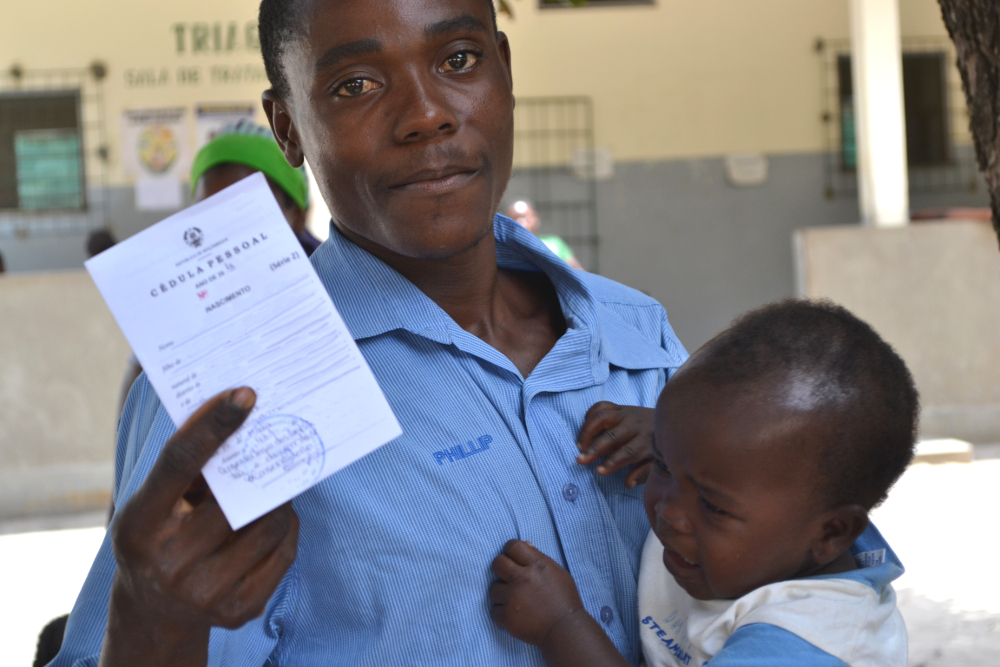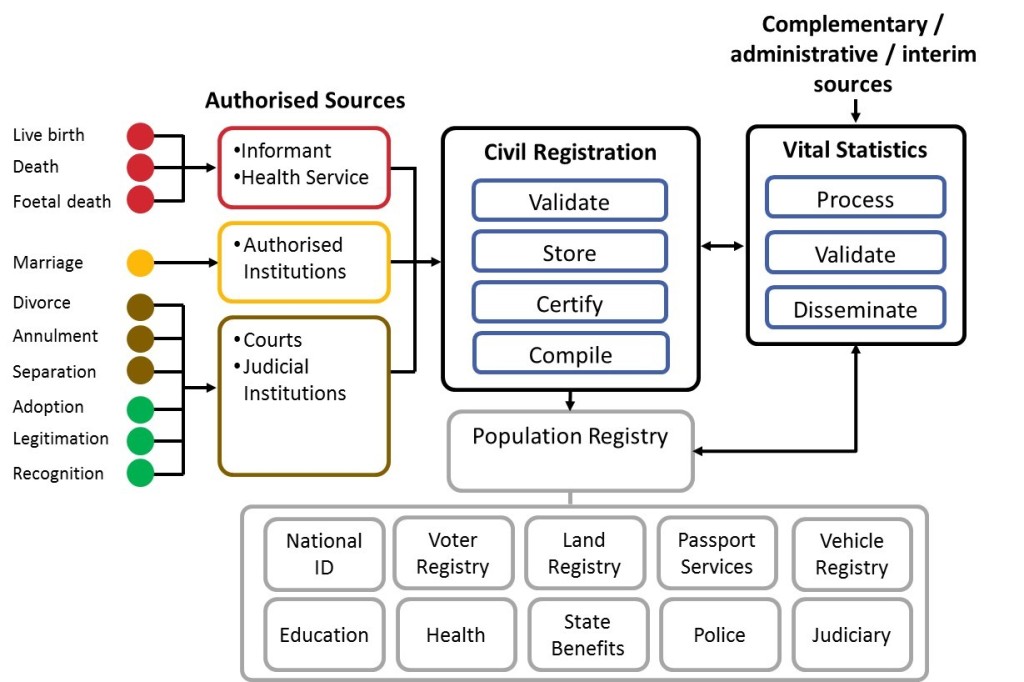
The Civil Registration and Vital Statistics Digitisation Guidebook (CRVS-DGB) is an online resource that provides step-by-step guidance for countries to plan, analyse, design and implement digitized systems and automated processes for CRVS.
Information and Communications Technology (ICT) has the potential to provide transformative improvements in CRVS systems based on its ability to extend registration coverage, standardise and streamline civil registration and vital statistics processes, integrate data from multiple systems and securely store data at scale, all in a cost-effective way. If properly employed, ICTs can make a significant contribution towards achieving universal registration of vital events, providing legal documentation of civil registration as necessary to claim identity, civil status and ensuing rights, and producing accurate, complete and timely vital statistics.
This guidebook responds to the need expressed by countries in Africa to develop effective, scalable and sustainable CRVS systems and to maximise the impact of ICT investments. It was developed in collaboration with country experts across Africa and remains a living resource that will continue to evolve and expand over time.
The CRVS Digitisation Guidebook is an integral part of the CRVS strengthening support offered to African countries by the African Programme for the Accelerated Improvement of CRVS (APAI-CRVS) and should be used in conjunction with the development of a national CRVS strategic plan and work programme.
The Guidebook provides a common methodology aimed at
| Government authorities responsible for the delivery of CRVS services | Project managers responsible for CRVS digitization including government ICT departments |
| Organizations providing technical assistance for CRVS strengthening from the United Nations, NGOs and the private sector | Donors supporting ICT related CRVS initiatives (as a framework for monitoring projects to safeguard financial investments) |
ICT as an enabler of CRVS

ICT solutions must be seen as enablers and directly support the business functions of CRVS. The alignment of ICT to business need is at the core of Enterprise Architecture methodologies and this Guidebook takes inspiration from such approaches, presenting them in a simplified and easy-to-use format. The CRVS business domain is well defined and is used as a common point of reference for CRVS systems throughout the Guidebook (see figure, adapted from the "Principles and Recommendations for a Vital Statistics System", UNSD, 2014). For effective enablement of CRVS, ICT solutions and technology choices must be appropriate for the country context and based on a thorough analysis of existing systems and infrastructure, eGov policies, CRVS processes, human capacity and operational procedures.
Smart implementation planning
Strong project governance
The CRVS Digitisation Guidebook should be used alongside other reference documents, which provide complimentary and supporting guidance:
- United Nations Statistics Division, 2014. Principles and Recommendations for a Vital Statistics System, Revision 3. New York.
- United Nations Statistics Division, 1998. Handbook on civil registration and vital statistics systems. Computerization.
- United Nations Statistics Division, 1998. Handbook on civil registration and vital statistics systems. Management, operation and maintenance.
- IADB / UNICEF, 2015. Toward Universal Birth Registration. A Systemic Approach to the Application of ICT.
- World Bank, 2014. Digital Identity Toolkit. A Guide for Stakeholders in Africa.
- IDPM, 2008. Success and Failure in eGov Projects.



